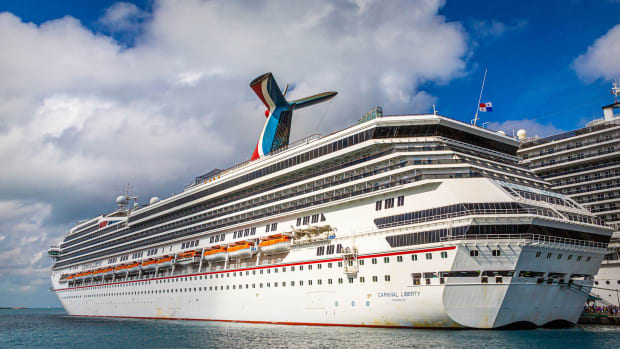For the past two years, since the covid pandemic hit in late-February 2020, the cruise industry has taken one punch after another. And, while the situation has improved from the extended period when cruises were not allowed to sail from United States ports, that does not mean that it's back to 2019 for Royal Caribbean International (RCL), Carnival Cruise Line (CCL), and Norwegian Cruise Line (NCLH).
The industry has done a remarkable job bringing operations back to near-normal. All three cruise lines not only have put all their ships back in service, they're also still moving forward with plans for new ships and other investments including improvements to private islands, and developing new ports.
That being said, Carnival just reported its second-quarter earnings and the market did not like the numbers at all. Shares of all three cruise lines were down double digits on Sept. 30, but traders clearly missed that aside from rising costs and a loss (both of which were expected) the cruise line largely delivered good news.

Image source: Shutterstock
Carnival Did Well in Areas it Controls
Carnival reported a GAAP net loss of $770 million for the quarter. That was driven by higher costs with the company specifically citing advertising expenses and having some of its fleet unavailable to produce revenue.
While the company's year-to-date adjusted cruise costs excluding fuel per ALBD during 2022 has benefited from the sale of smaller-less efficient ships and the delivery of larger-more efficient ships, this benefit is offset by a portion of its fleet being in pause status for part of the year, restart related expenses, an increase in the number of dry dock days, the cost of maintaining enhanced health and safety protocols, inflation and supply chain disruptions. The company anticipates that many of these costs and expenses will end in 2022.
If you're investing in any cruise line you have to do so on a very long-term basis. That makes profitability less of a concern than the company building back its business and Carnival showed some very positive signs in that direction.
- Revenue increased by nearly 80% in the third quarter of 2022 compared to second quarter 2022, reflecting continued sequential improvement.
- Onboard and other revenue per PCD for the third quarter of 2022 increased significantly compared to a strong 2019
Total customer deposits were $4.8 billion as of August 31, 2022, approaching the $4.9 billion as of August 31, 2019, which was a record third quarter.
New bookings during the third quarter of 2022 primarily offset the historical third quarter seasonal decline in customer deposits ($0.3 billion decline in the third quarter of 2022 compared to $1.1 billion decline for the same period in 2019).
Carnival (and likely all the cruise lines) is being hurt by prices generally being depressed and some passengers paying for their trips using future cruise credits from cruises canceled during the pandemic. That's not really what matters though. Carnival has been increasing passenger loads and getting people back on its ships.
"Since announcing the relaxation of our protocols last month, we have seen a meaningful improvement in booking volumes and are now running considerably ahead of strong 2019 levels," Carnival CEO Josh Weinstein said. "We expect to further capitalize on this momentum with renewed efforts to generate demand. We are focused on delivering significant revenue growth over the long-term while taking advantage of near-term tactics to quickly capture price and bookings in the interim."
Basically, cruise prices are cheap right now because it's more important to get customers back on board than it is to maintain pricing integrity. That's a tactic that could hurt long-term pricing, but the cruise industry is less vulnerable than other vacation options because there have always been large pricing variations based on the calendar and the age of the ship being booked.
It's a Long Voyage for Cruise Lines
Carnival was trading at its 52-week low after it reported. That's a pretty major overreaction given that the cruise industry was barely operating in the fall of 2021.
Yes, the industry has a long way to go. All three major cruise lines took on billions of dollars of debt during the pandemic. Refinancing that debt in an environment with higher interest rates is a challenge, but it's one Carnival (and its rivals) have been meeting.
That has come with some shareholder dilution. Carnival sold $1.15 billion in new stock during the quarter, but the company has over $7.4 billion in liquidity. Weinstein is optimistic (he has to be, that's part of his job) about the future.
"During our third quarter, our business continued its positive trajectory, achieving over $300 million of adjusted EBITDA and reaching nearly 90% occupancy on our August sailings. We are continuing to close the gap to 2019 as we progress through the year, building occupancy on higher capacity and lower unit costs," he said.
Usually it's easy to dismiss a CEO making upbeat comments after posting a loss, but in this case, Carnival has basically followed the recovery path it laid out once it returned to sailing. Both Royal Caribbean and Norwegian have followed similar paths and while meaningful shareholder returns may take time, these are strong companies built for the long-term that made a lot of money before the pandemic and should do so again.







